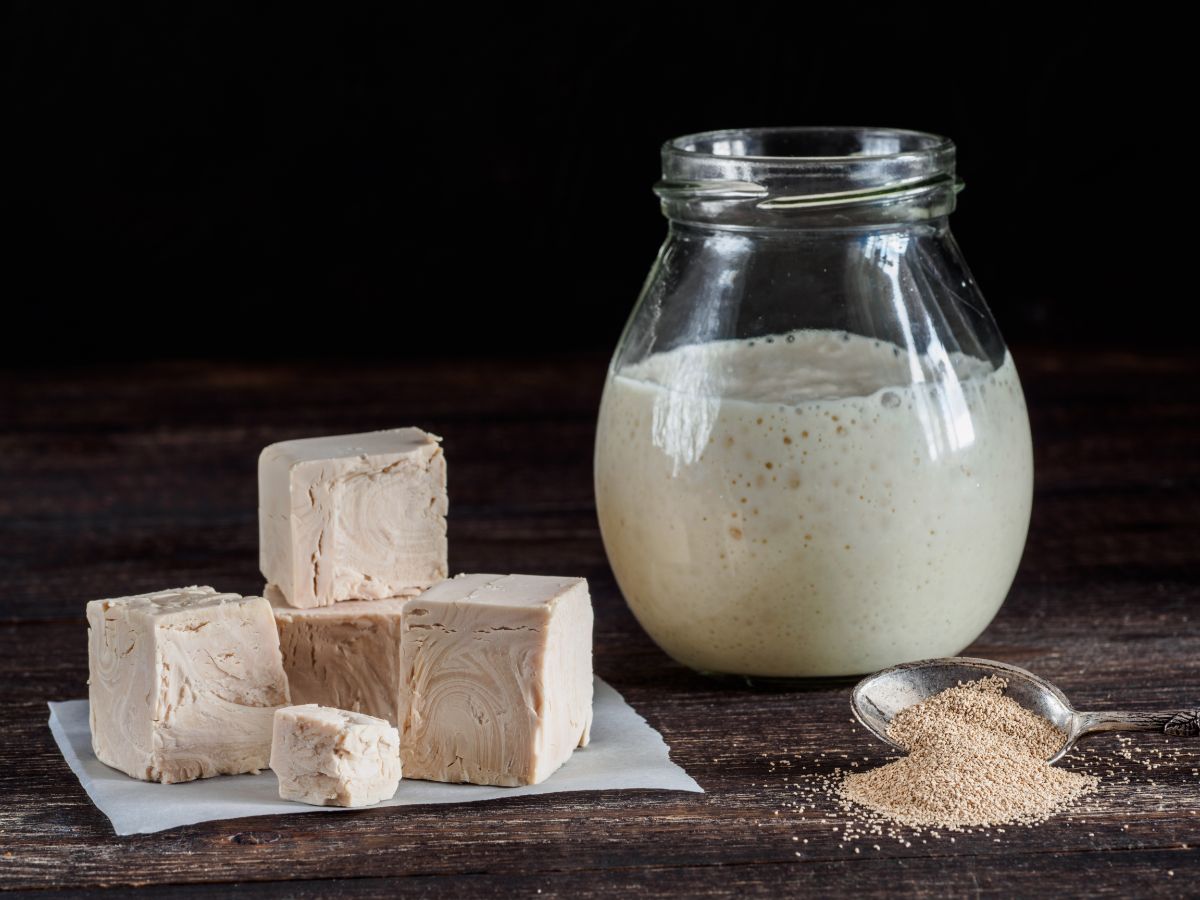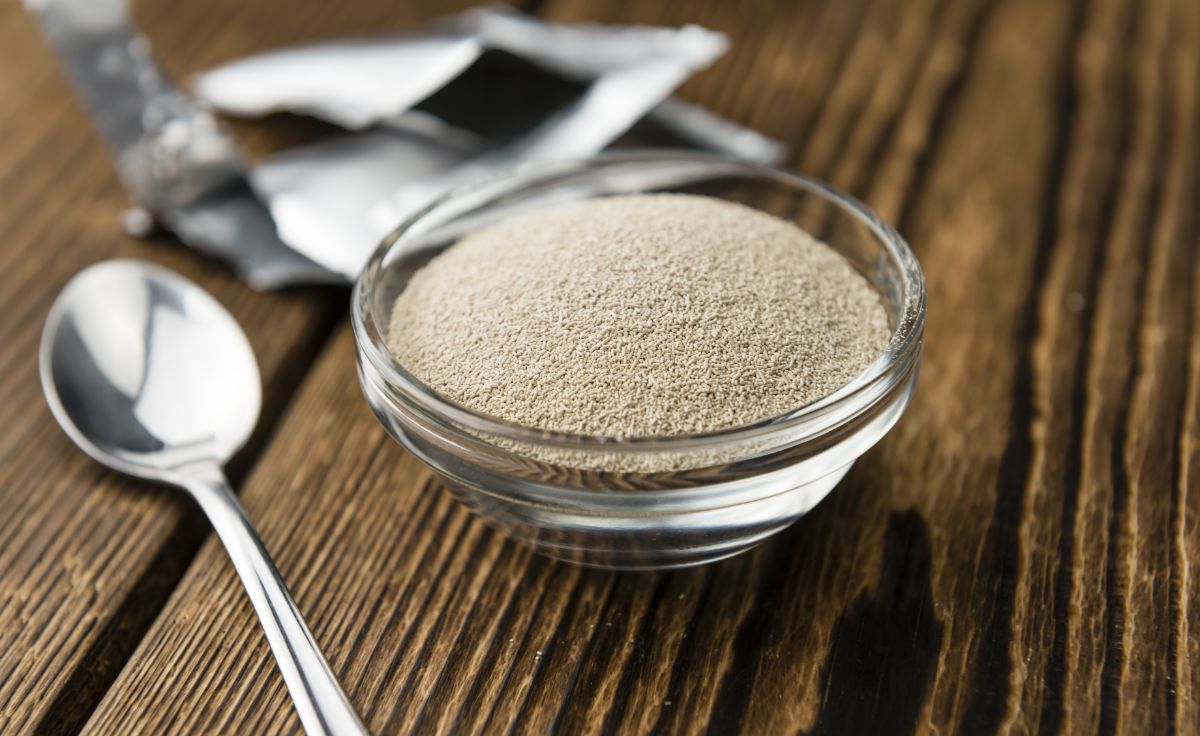Baking veterans, as well as the baking novice, always seem to buy more yeast than is likely to be used at one time. Storing your unused yeast properly is crucial if you want to extend its life and be able to use it in your next baking adventure.

On each package or jar of yeast you purchase, you will notice a ‘best by’ date. The date is set two years from the date the product was packaged. Two numbers appear as the ‘best by’ date.
One number is for the month and the second is for the year in which the yeast should be replaced. Because this product has a two-year life span, it is important to know how to store yeast to ensure it stays useable for two years.
Where to Store Yeast
If you have not opened the package of yeast, you can store it in a cool, dry place. You have to make sure it is not exposed to heat, so a cupboard over your stove would not be a good choice. You can also store the yeast in the refrigerator or freezer. Yeast is a very perishable product, and if it is exposed to heat, moisture, or air, it will go unusable quickly.
Once you have opened either the package or jar of yeast, it must go into the refrigerator or freezer. Place the package into an airtight container. It is suggested you use the remaining yeast within four months after placing the opened package in the refrigerator.
If you freeze an opened package, it is recommended you finish the package within six months after placing it in the freezer.
There are conflicting reports regarding the advantages or disadvantages of storing yeast in the freezer. Some who have used this method of storage have been able to use the product without any adverse effects happening to their bread projects.
There are also reports that bread would not rise from yeast stored in the freezer. Some believe that because yeast is alive, storing it in the freezer would kill or damage the yeast cells.
The reports are not a result of any formal testing process, merely the different stories from cooks. It was not determined if storage was improper, or a different brand freezes better than others. The best test of this method would be trial and error, and to have access to a fresh batch of yeast in case yours does not work.
When you are ready to use yeast that has been stored in either the freezer or refrigerator, you should allow it to reach room temperature before using it in your recipe.
Take out only the amount you need, leaving the rest in storage, and let it sit out on your cupboard for about forty-five minutes. Yeast is a live organism; as a live product, it will lose its activity abilities over time.
Even if you do not open the package, it will begin losing its ability to ‘work.’ Before using a yeast that has been stored for any amount of time, you should ‘proof’ it before adding to your bread project.
Proofing Yeast- The process of proofing yeast is to make sure it can still make your bread dough rise. To proof your stored yeast, dissolve one package of yeast and one teaspoon of sugar in a cup of warm water.
The water temperature should be between 110 and 115 degrees Fahrenheit. Allow this mixture to sit for about ten minutes. If your yeast is still active, you will see it begin to foam.
If the yeast foams it means it is still active and you can use it in your bread. When adding it to your recipe, you have to remember to adjust your water amounts as you added to water for the proofing process. If no foam appears, the yeast is bad, and you should throw it away.
Tips For Storing Dry Yeast

If you have opened your package of yeast, you should prepare the package for storing in either the freezer or refrigerator:
Fold the package down to the level of the yeast. This folding will release any air that has been trapped in the bag. Remember that air will destroy the yeast.
Seal the package with a bag clip or tape to ensure it stays tightly closed.
If you are storing a large opened package of yeast, separate it into multiple zipper bags. You want to be sure all air is removed from each bag before zippering them closed.
On each bag, you should write the ‘best by’ date that was on the original packet, as well as the date you are placing it in storage.
How Long Will the Yeast Remain Good?
Dry yeast should still work in your baking projects up to four months beyond the ‘best by’ date stamped on the envelope. It will depend a lot on how well you seal and store the package on whether or not the yeast will last this long.
Yeast is a leavening agent and it contains active enzymes that will create carbon dioxide when it is moistened. Water is the starting ingredient of a bread project and a majority of other baking goods that require rising before you bake them.
If they become introduced to moisture while being stored, it will render it unusable as it will have been activated already.
How Do I Know if the Yeast Has Gone Bad?
Yeast will eventually change color as it gets older. It will go from a tannish grey to a darker brown. It will also begin to clump together as it gets older. When these changes occur, the yeast has gone bad.
The problem with yeast is that it will take a long time before it begins making these changes. The yeast could no longer be active long before you notice the visible signs of age.
As yeast ages, the organisms become less active and begin to die. This process means the yeast will not be able to act as an active ingredient in your bread projects, and it will not help to make the dough rise.
